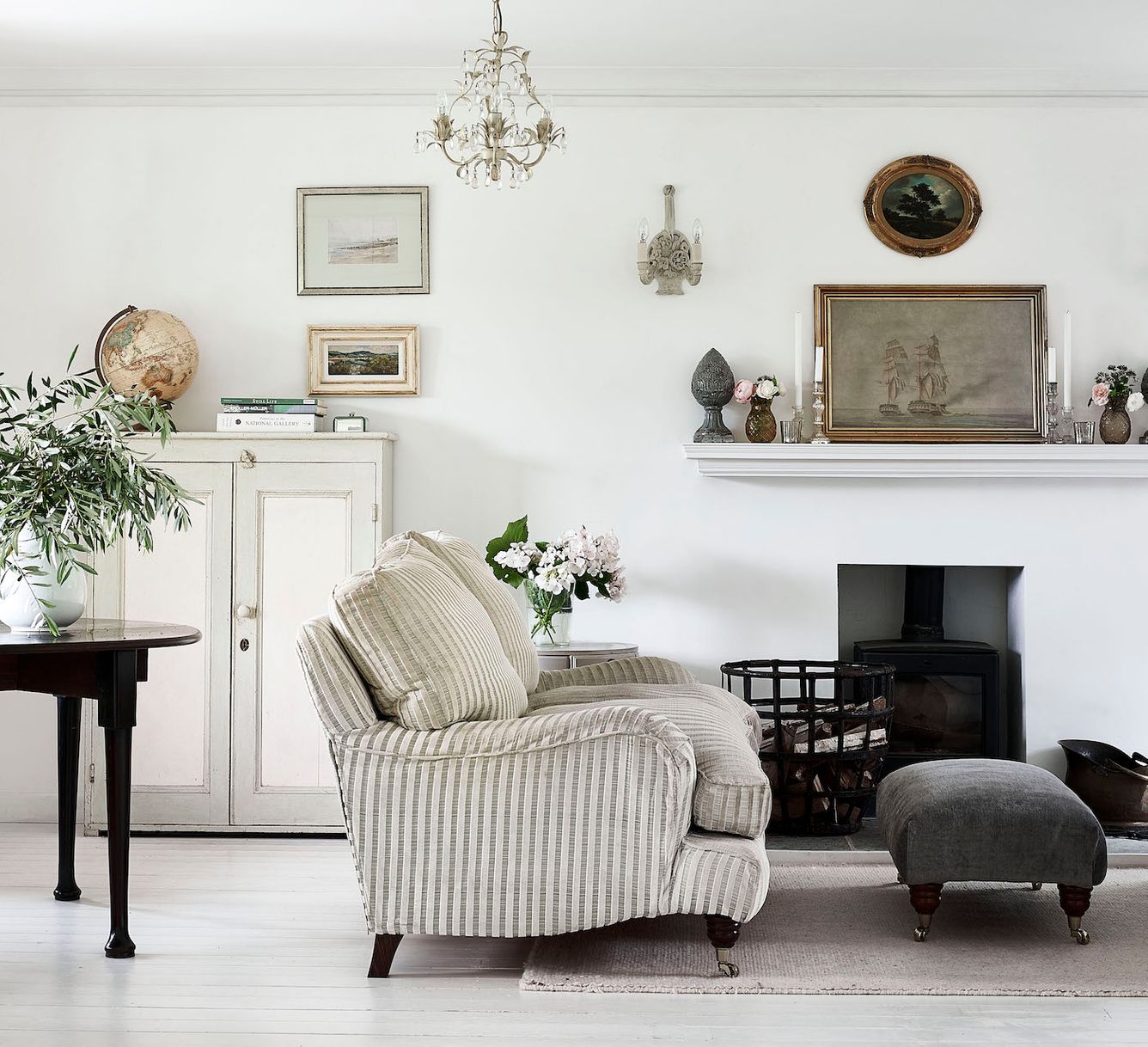
Top Dogs
They've earned their spot in history and our hearts, so it's no wonder we love to put dogs on display in our homes.
We are obsessed with collectors and homeowners that combine their love for vintage and their favorite furry four-legged friends. Some stick to amassing a specific breed or art form and others take a more casual attitude; if it barks, it's a good buy. Here's some inspiration to help you to start your own pack.
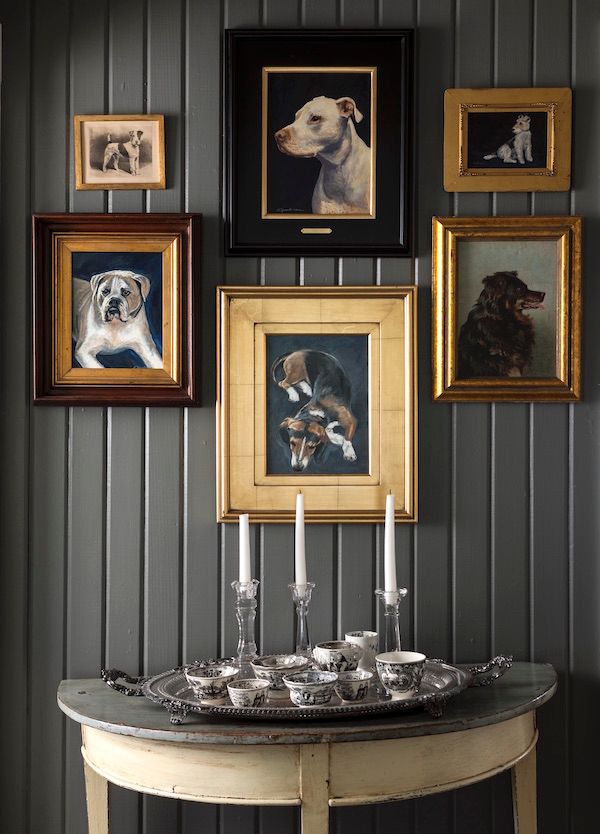
FITTING COMPANIONS. Dog paintings—two antiques and the rest painted by this homeowner—guard a collection of black-and-white amazingly unblemished transferware teacups from the 1700s and 1800s. Gallery walls are impactful when centered around a theme and united by frames that relate to each other in style or color (here, that's black and gilt, a classic combo).
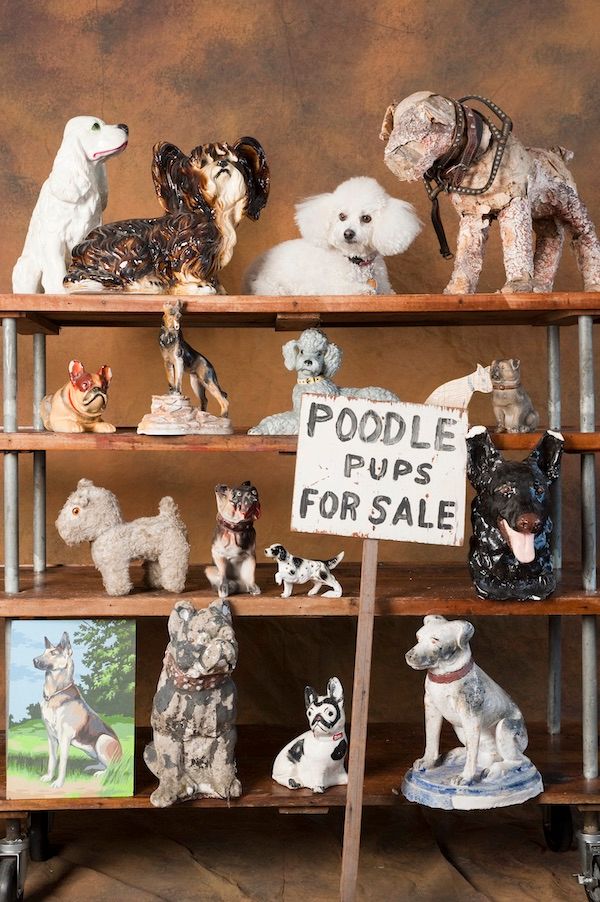
GONE TO THE DOGS. Chalk it up to animal magnetism: Dog statues, puppy figurines, and stuffed toys—though can you spot the real dog above?—are faithful companions at flea markets. Most collectors focus on a breed of dog that they own, although famous dogs such as Benji and Rin Tin Tin have wide appeal. Prices start at just $1.
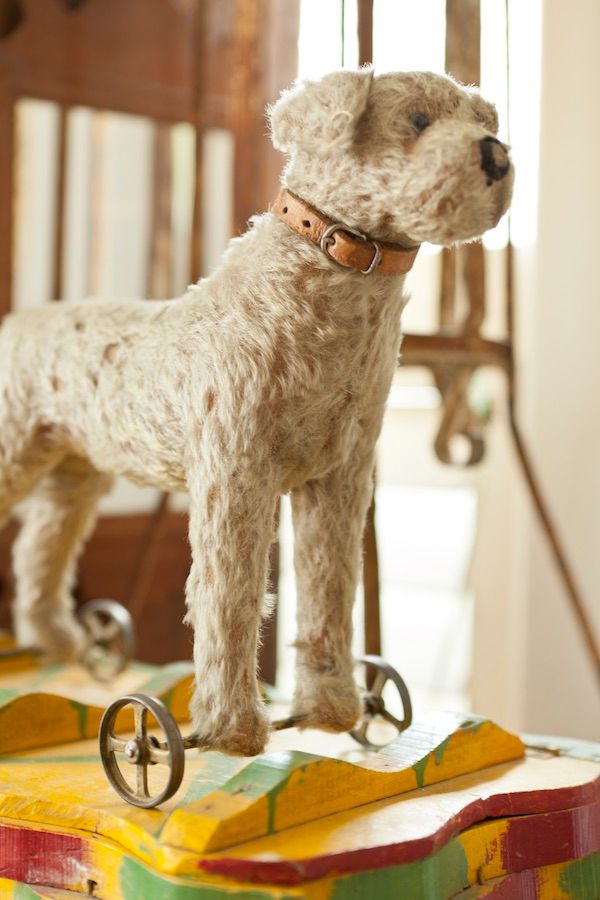
ROLL ON, LITTLE DOGIE. While it may not be exactly who Roy Rogers was singing about in his cowboy ballad, wheels on this stuffed toy from a Portland-area estate sale let you to take this dog for a walk. While it may be a little fragile for "ruff" play, it would be a wonderful nursery or kid's room accessory.
Fun Facts about Famous Fidos:
*In The Wizard of Oz, Dorothy's faithful sidekick Toto's real name was Terry. She was abandoned as a puppy but adopted by a Hollywood dog trainer and cast in 17 films!
*Rin Tin Tin came to star in nearly 30 films, many of which were written specifically for him. "Rinty" was the unofficial doggie mascot of Warner Bros. Studios and his popularity effectively saved the then-small studio from bankruptcy.
*Lassie was the most popular canine movie star of the 1940s and ‘50s. Although the character is female, the part has always gone to male collies.
*Higgins was a star in the 1960s and '70s, having charmed us in the sitcom Petticoat Junction before making his way to the silver screen as a beloved stray mutt who saves the day. Yes, we're talking about Benji!
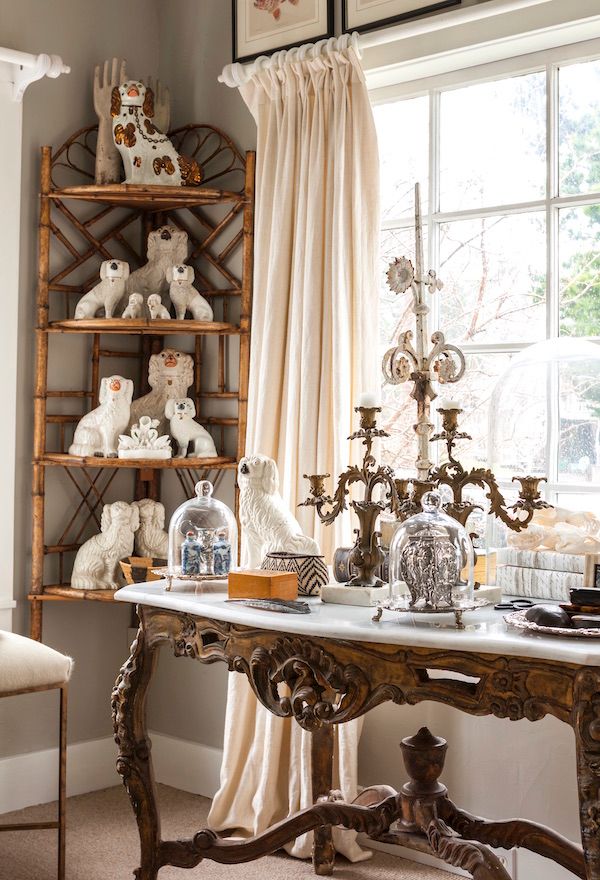
ENGLISH BRED. Shelves of antique English Staffordshire dogs in their traditional standing guard position watch over this room from their corner pocket. These spaniels were sold in pairs and were typically displayed on the mantel in Victorian homes. Reproductions abound, but originals bear certain hallmarks, including having visible brushstrokes, no or very tiny holes on the bottom (newer ones have dime-sized holes) and, if found as a pair, being not quite identical.
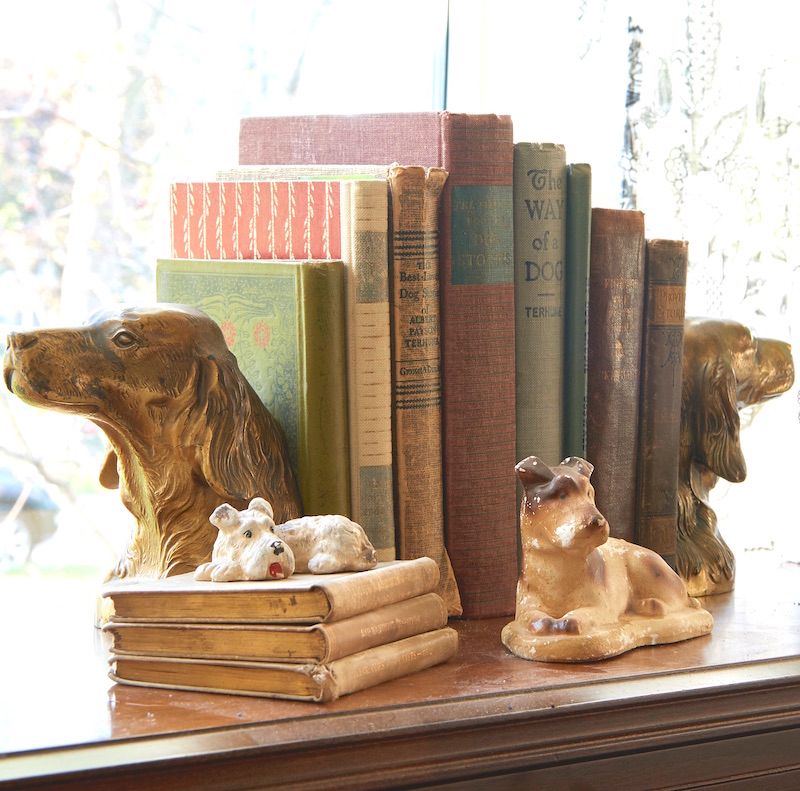
PACK MENTALITY. In this charming vignette, statuary and dog-themed books are grounded by noble-looking bookends. There a many sites online that specialize in dog books, art and figurines. Check out eBay's rare dog book shop, for example.
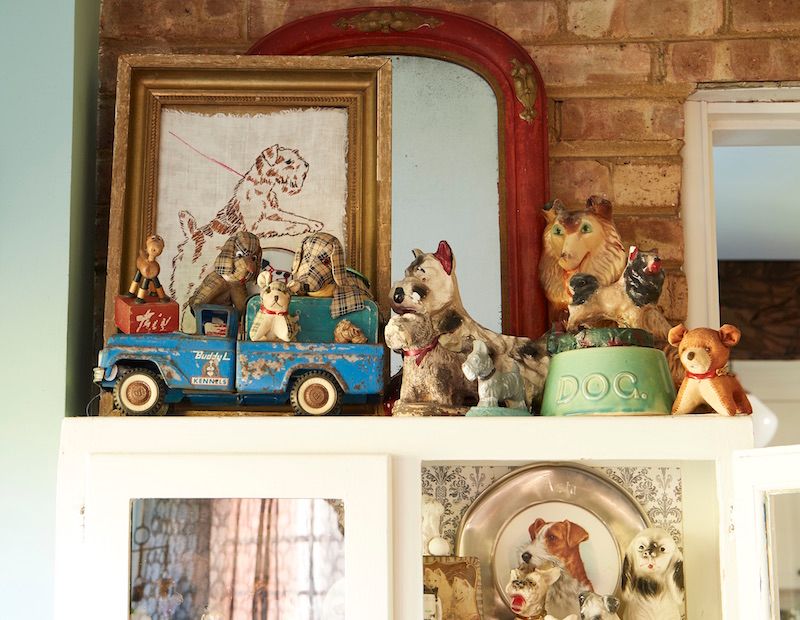
OUT OF THEIR CRATE. Collection overflow graces the top of this cabinet that's filled with dogs of all breeds—meaning materials. Among them is chalkware, an affordable alternative to Victorian ceramic figurines (like Staffordshire pottery) made mostly from plaster of Paris. The art form enjoyed a second wave of production during the Great Depression, known as "carnival chalkware." As the name suggests, these figurines were meant to be cheap and cheerful (read: tacky and fun!) and today evoke nostalgia.
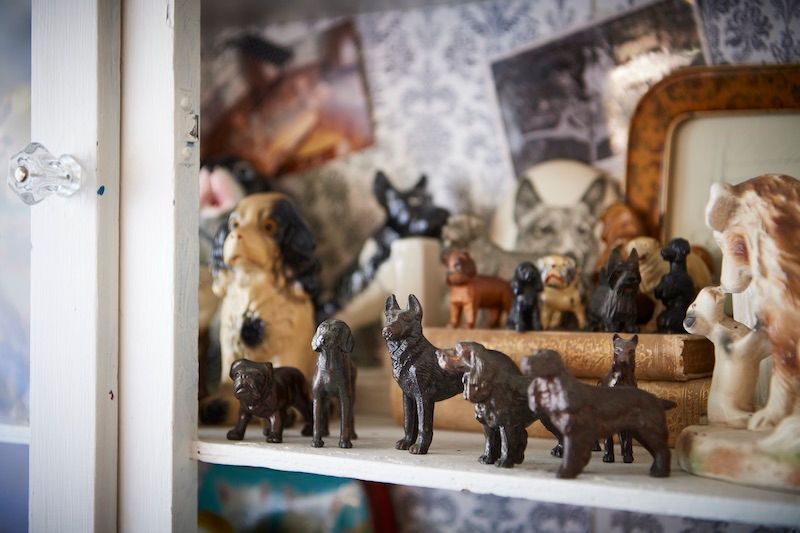
MAN'S BEST LITTLE FRIENDS. Cast-iron toys—everything from pups to trains to trucks—were popular in the 1900s and then enjoyed a heydey in the early 20th century thanks to mass production that spun out of the industrial revolution. A lack of disposible income during the Great Depression saw the start of their decline in popularity and production, but relics have stood the test of time thanks to their sturdy construction. Today they read as tiny works of sculptural art and deserve to lead the pack in a display of collectible minis.
HOME PAGE


